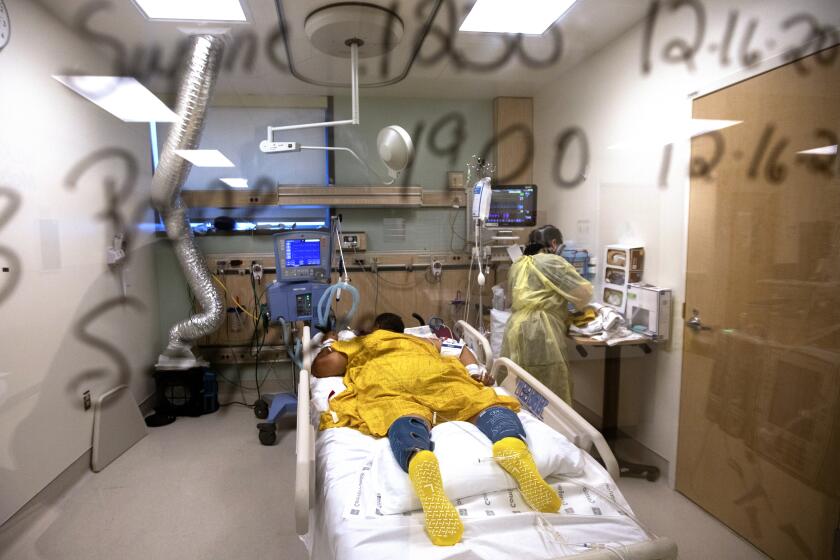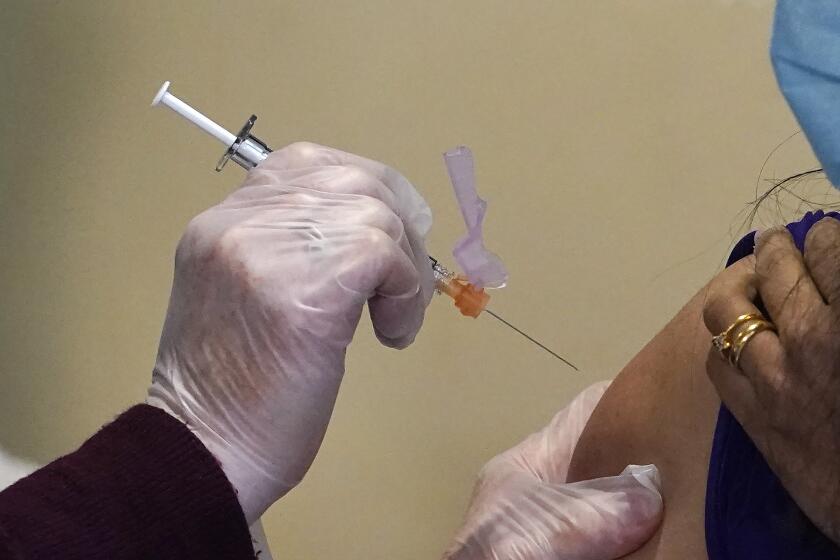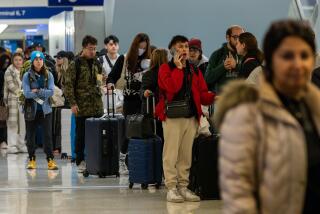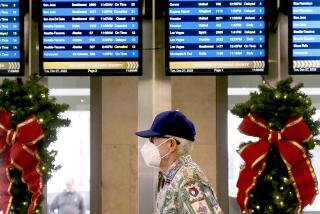People of color, elderly pay the cruelest price as COVID-19 spreads throughout L.A. County
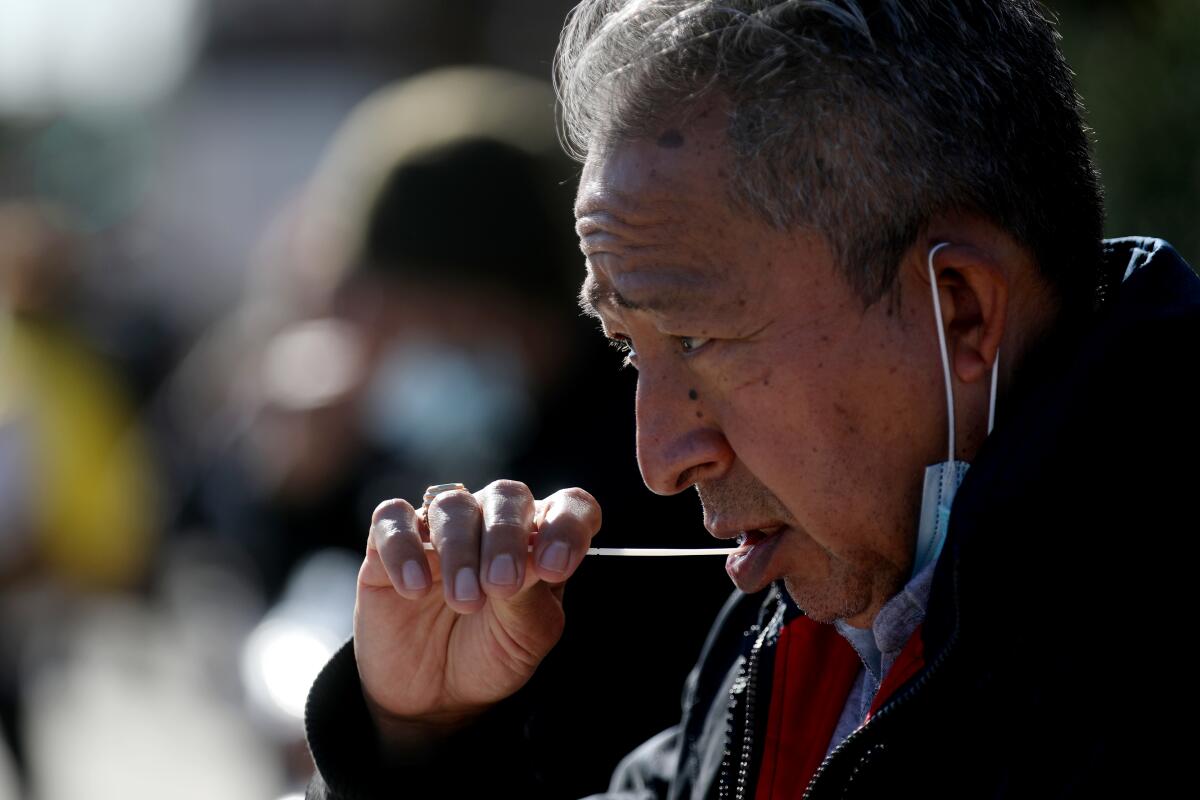
- Share via
The December surge in COVID-19 had spread widely into communities across Los Angeles County, touching more lives than ever before and making the chances of being exposed to the virus much more likely than ever.
New daily cases have hit levels that are hard to fathom, including one day this week when more than 20,000 new COVID cases were reported in the county. An estimated one in 80 people in L.A. County are now contagious with the virus; that’s far worse than in late September, when scientists calculated that one in 880 county residents were infectious.
The latest reminder of the spread came Thursday, when Los Angeles Mayor Eric Garcetti said that his 9-year-old daughter Maya had tested positive. Both Garcetti and his wife tested negative, he said.
Garcetti said he doesn’t know how his daughter was infected. “We haven’t mixed households,” he said. “There’s no behavior that she is engaged in that doesn’t adhere strictly to the protocols of our health officials.”
But there is also a grim pattern to the spread, with some parts of the county being stalked in relentless ways.
The elderly and people of color are being hit disproportionately hard by the latest surge.
L.A. County Public Health Director Barbara Ferrer warned that the weekly death count in skilled nursing facilities is starting to increase, although it hasn’t reached the level early on in the pandemic.
And, while the death rate among white residents remains stable — at one to two per day per 100,000 white residents — the death rates for Latino, Black and Asian residents are rising. Among Latino residents over the past four weeks, for example, the death rate has jumped from 1.4 daily deaths per 100,000 Latino residents to 4.5 daily deaths.
Latino communities are at higher risk for the illness for several reasons. Members tend to be essential workers who must go to retail stores, manufacturing plants and other sites rather than work from home, raising the chances they’ll come in contact with an infected person. Some Latino neighborhoods are more densely populated, making the virus easier to spread.
Among Black residents, the death rate has jumped from less than one death per 100,000 Black residents to more than three deaths per 100,000.
And among Asian residents, the death rate has risen from 0.5 deaths per 100,000 Asian residents to three deaths per 100,000.
The growing numbers are taking a toll. The availability of intensive care unit beds throughout Southern California hit 0% Thursday, and officials warned that conditions in hospitals are expected to erode further if the coronavirus continues to spread unchecked.
California is now tallying an average of 203 COVID-19 deaths a day over a seven-day period, and 35,200 cases a day — both records, and both quadruple the numbers from mid-November.
Younger adults are spreading the virus the most, officials said, but it’s the oldest adults, when they get infected, who are dying at the highest rates.
The number of unoccupied beds in Southern California has steadily dropped as hospitals are flooded by unprecedented numbers of COVID-19 patients.
“This is a preventable tragedy, because those most vulnerable to serious illness from COVID-19 can be protected by everyone else when we wear our face coverings, keep our distance, wash hands frequently and avoid mingling with non-household members,” Ferrer said.
Much of the current surge is believed to be tied to Thanksgiving gatherings that led to major spread of COVID. Officials now hope to avoid a repeat of that as the year-end holidays approach.
“I am afraid,” Dr. Clayton Chau, Orange County’s health officer and Health Care Agency director, said Tuesday. “I have never been so afraid of Christmas and New Year’s in my life like I have now, because ... I can’t imagine what it would be like after the holiday if people are not listening, if people are not complying, if people are in defiance and get together.”
If there are more super-spreader events on those holidays, the impact will likely continue to be felt unevenly.
That’s because people living in the most impoverished areas of L.A. County are also more likely to die from COVID-19.
“The death rate among people living in the lowest-resource areas is now four times that of people living in areas with the most resources,” Ferrer said. “And unfortunately, this gap, too, looks to be growing.”
“The widening gaps are stark reminder that many of our essential workers are Black and brown, and many are not able to telework or stay home,” Ferrer said. “Many work at jobs with low wages, and many live in underresourced neighborhoods.”
Ferrer asked businesses to fully implement safety rules to protect workers from COVID-19, including providing personal protective equipment and adhering to infection control measures.
Several states say they have been told to expect far fewer doses of the Pfizer COVID-19 vaccine in its second week of distribution.
“And we also need every resident to protect our essential workers by playing by the rules. This means always wearing a face covering and keeping distance from others,” Ferrer said.
Violations at workplaces can be reported anonymously can reported at (888) 700-9995.
More to Read
Sign up for Essential California
The most important California stories and recommendations in your inbox every morning.
You may occasionally receive promotional content from the Los Angeles Times.
